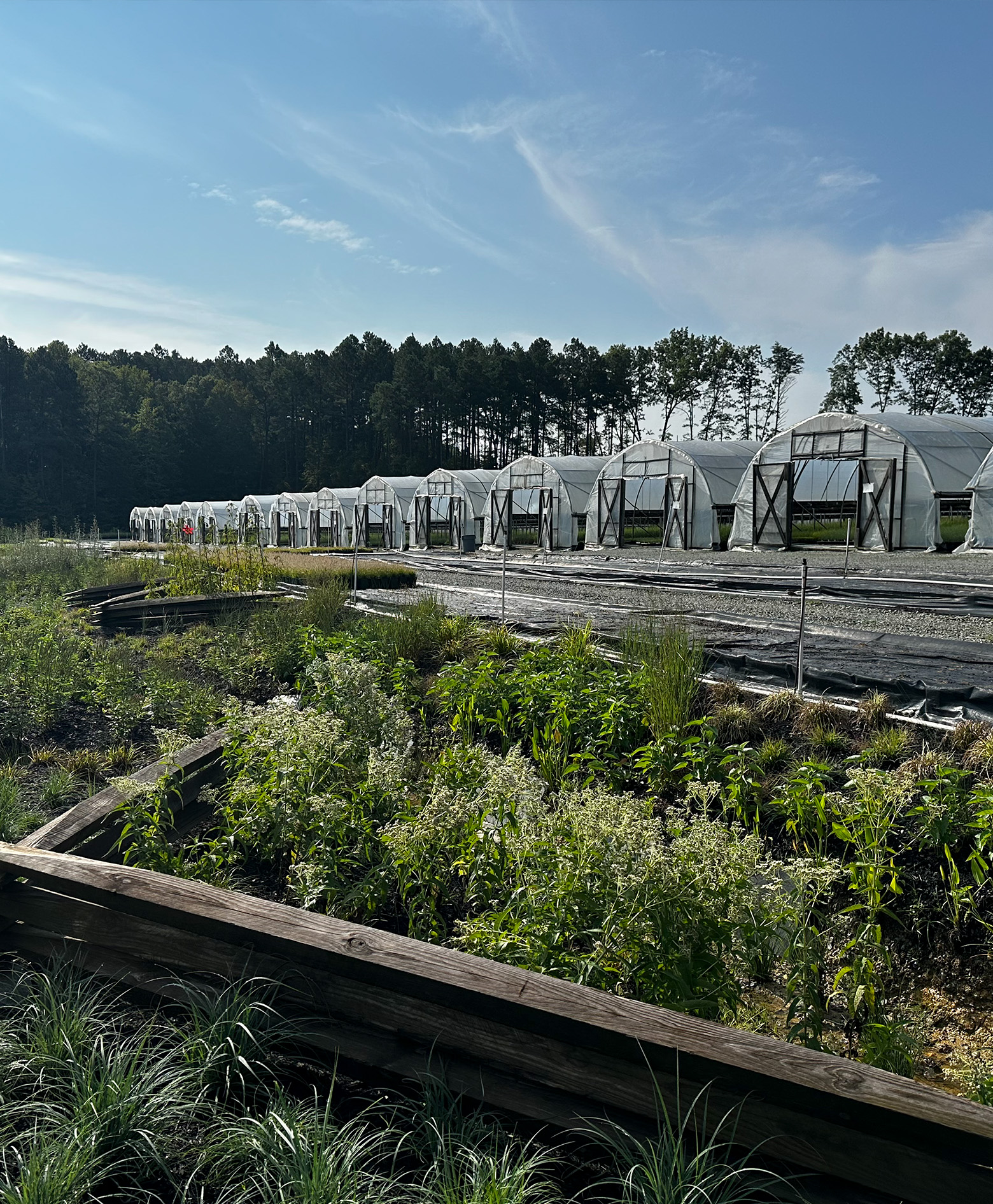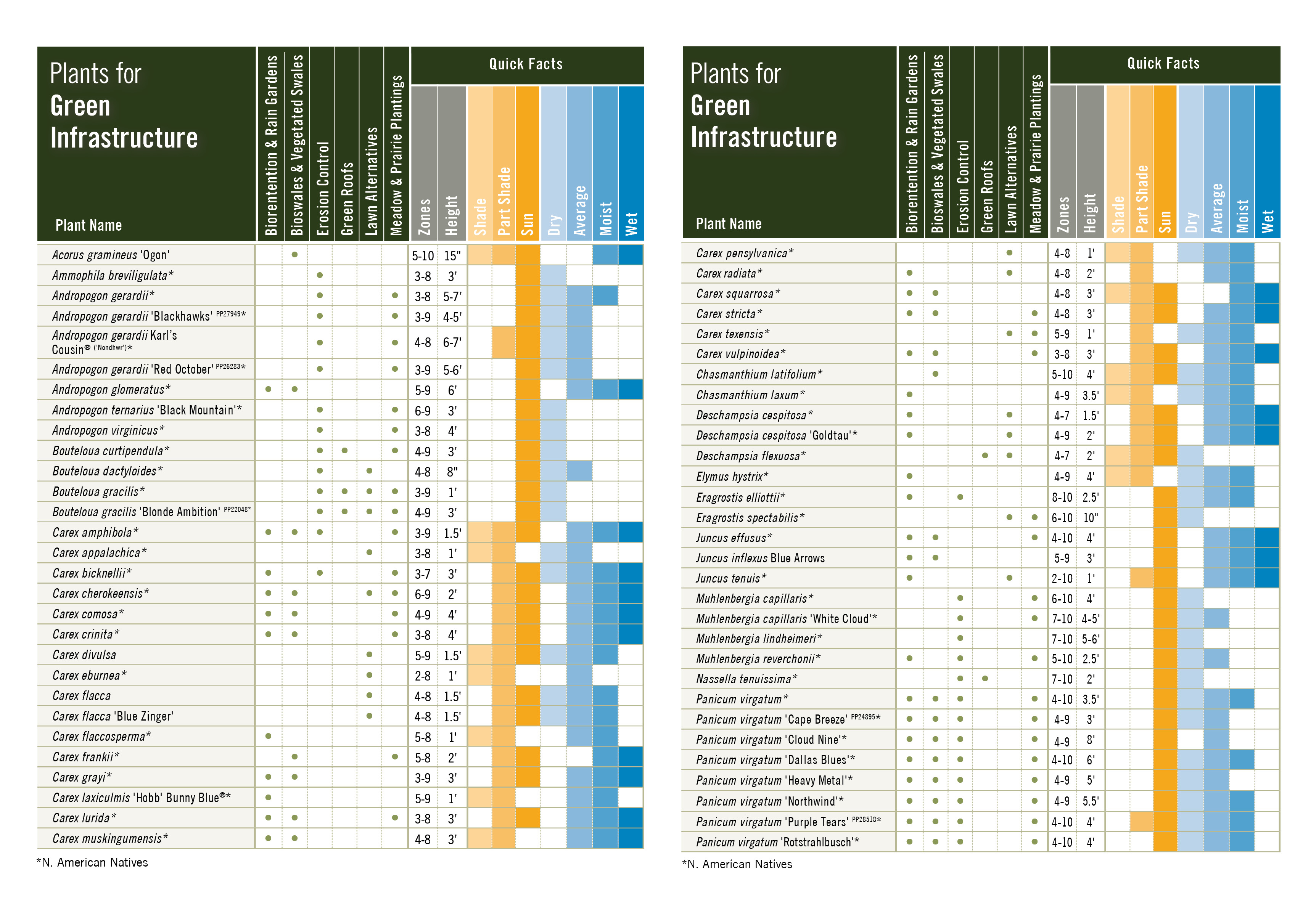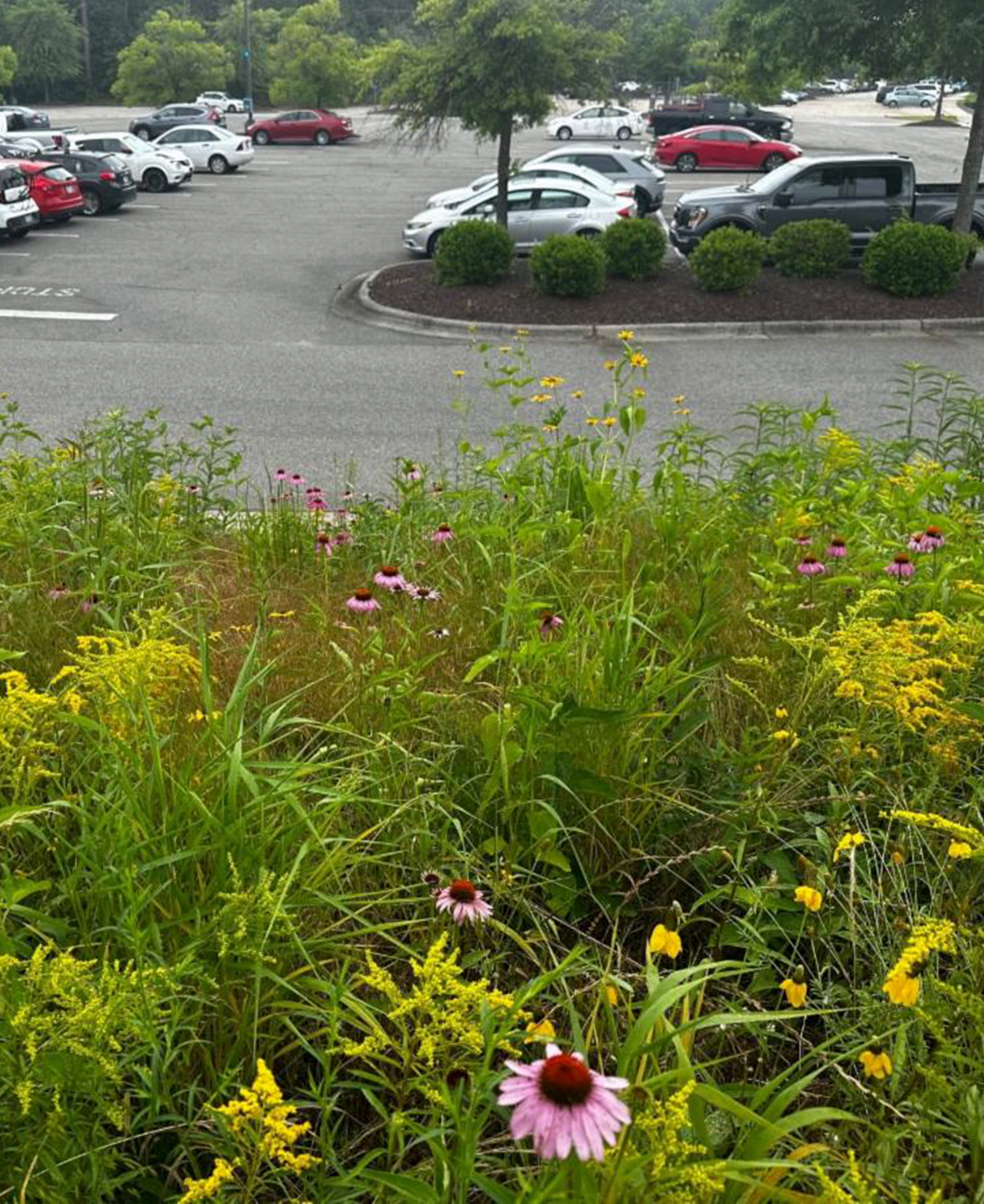A Green Six-pack
In this post, we give a shout-out to six plants that deserve attention. If you’re designing, growing, or sourcing plants for green infrastructure—especially stormwater projects—these plants should be on your list.
Read Post

Green infrastructure (GI) uses natural features to manage stormwater. Grasses, sedges, and a multitude of other plants play a significant role in GI. Their use in GI measures like rain gardens, green roofs, and meadow plantings promote biodiversity, enhance resilience to climate change, and help create cleaner, healthier places to live. They also hold a key to broader industry trends: low-maintenance landscaping, problem-solving with plants, and planting with a purpose beyond the visual.

That’s where our Plants for Green Infrastructure chart can help.
We’ve selected typical green infrastructure features in use today, and noted grasses, sedges, and rushes that should perform well in those growing environments. If you’re not familiar with these features, see descriptions here. The GI field is constantly changing and there may be other grasses and sedges that will work, but this is a great starting point for narrowing down choices.

Native Plants for Stormwater Projects
A few years ago, Hoffman Nursery and others worked with North Carolina’s stormwater program to add new plants, including grasses and grasslike plants, to the NC Stormwater Design Manual. To help the selection process we’ve created a chart of plants from the manual that we grow, together with a few others we recommend for bioretention and stormwater wetlands.
Click here to download a copy of our full GI guide.
Need more?
Call 1-800-203-8590 or email sales@hoffmannursery.com. We’d love to help! And be on the lookout for more exciting GI news coming soon.

Get Current Availability: Excel Download |PDF Download